MACHUPICCHU INCA LEGACY CIRCUIT 2
A second route to get to know the citadel of Machu Picchu through the main constructions is another option to get to know the Inca legacy, recommended for all tourists.
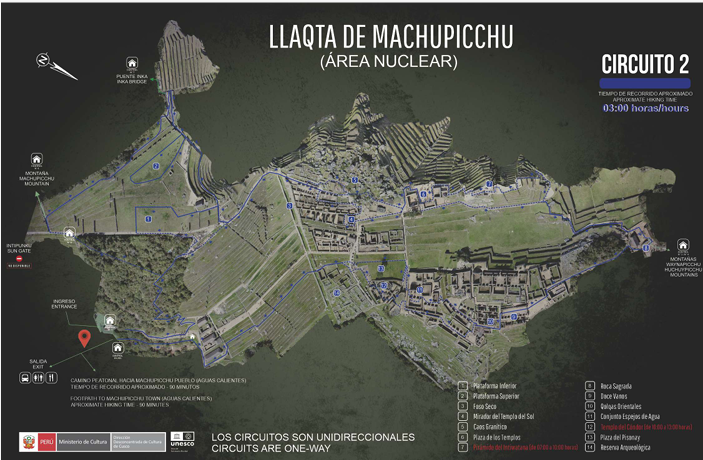
Circuit 2 is another route that is taken to appreciate the wonder of the world, it has a similarity with circuit 1 but includes other areas to appreciate more Inca constructions and buildings.
In this circuit you will not only be able to see the Dry Moat, the Temple of the Sun Viewpoint, Granite Chaos, the Set of Water Mirrors, the Pisonay Square and the Archaeological Reserve, but you will also appreciate the Sacred Square, the Sacred Rock, the Twelve Vanos, the Eastern Qolcas, the Intihuatana Pyramid and the Temple of the Condor.
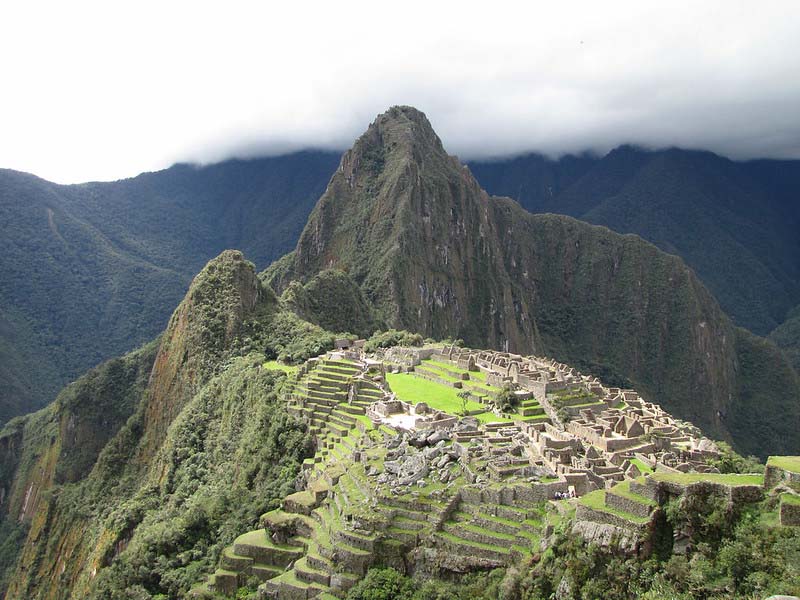
The dry ditch, a space that may have served as a water drainage or also used as a delimitation between two sectors, agricultural and the other civil, a geological fault that traces itself in a northeast-southeast direction, so that the agricultural sector towards the The south was formed by a system of crops and the urban sector to the north allowed political, civil and religious activities to take place.
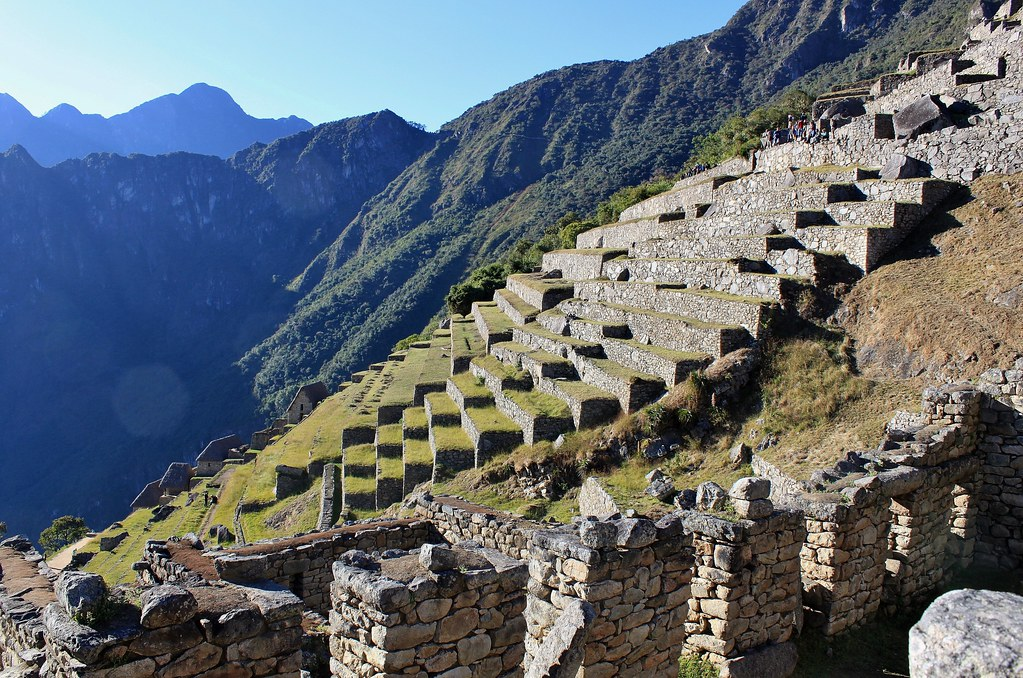
The viewpoint of the Temple of the Sun is located in the upper part of the Temple of the Sun and allows us to observe the enclosure built on a natural cave, due to its high location it is considered a religious construction that served to worship the sun, this Inca building is the only construction in a circular shape, made from granite blocks that has a semicircular wall with two windows, niches and a trapezoidal door with double jamb, this temple served as an astronomical observatory where the arrival of solstices and changes could be exactly determined of station.
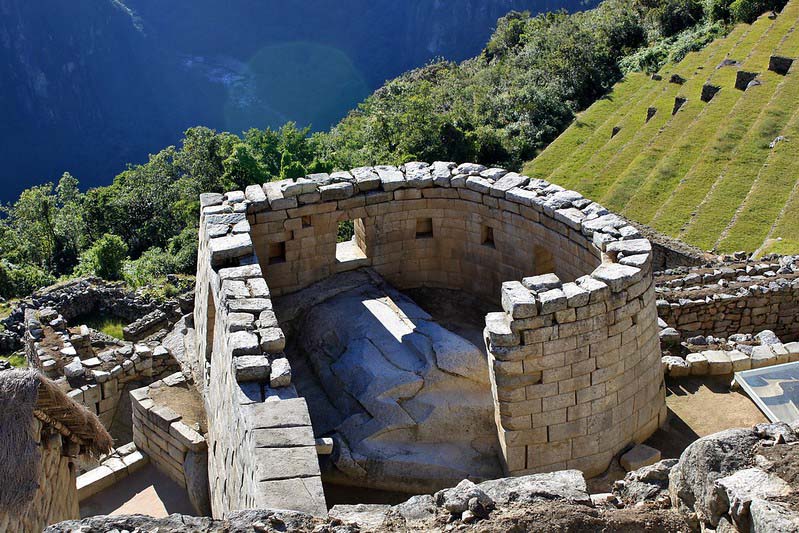
The construction of the Inca city and the morphology of the land where the rainwater penetrates the faults and fractures help gravity to separate the granite blocks and form the granite chaos, which found by the Incas, they carry out the construction and stabilize platforms, walls and platforms to later build their temples, houses and other buildings.
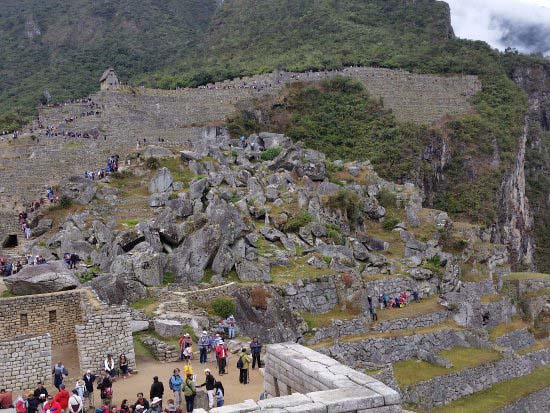
The set of mirrors located in the urban area of the citadel in the lower part of Machu Picchu, a construction similar to two mortars, were carved in an outcrop of granite, have a circular shape carved into the ground, which when filled with water projects the reflection of the sky and where the Inca gods such as the sun, moon and stars rise, used by the Incas as an astronomical observatory.
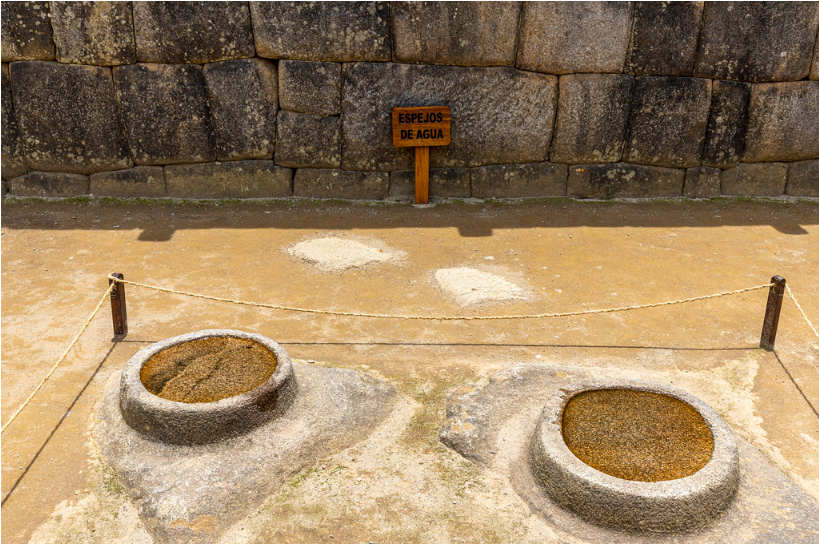
Plaza Pisonay known in the Inca citadel, because the Pisonay is a tree typical of the Andes Mountains, cultivated by the Incas, located in the sacred square of Machu Picchu, it is the emblematic tree that can be found in various destinations in the mountains included in the citadel of Machu Picchu.
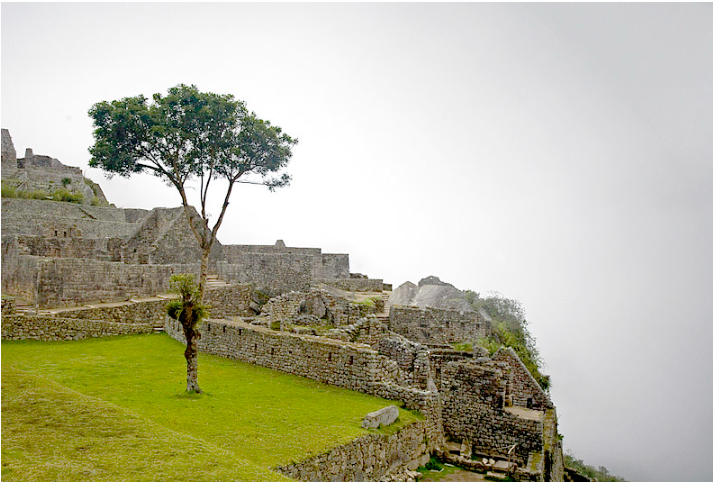
The Sacred Plaza was a space used for the main religious ceremonies, it has a rectangular shape of approximately 400 meters, located in the center of the upper sector of the Inca citadel, it is one of the busiest and most visited places by tourists, located around two Remarkable constructions such as the Main Temple, and the Temple of the 3 Windows, both enclosures used for religious rituals carried out by the Incas. We can highlight the Main Temple built with huge blocks of carved and fitted stone, with a U-shaped design, considered one of the main important constructions in Machu Picchu and the temple of the 3 windows, a construction with finishes and fine work within the entire city. Inca, a trapezoidal wall that worshiped the Inca worldview. The well-known Inca trilogy consisted of the Hanan Pacha (celestial world), Ukhu Pacha (underworld of the dead) and Kay Pacha (earthly world).
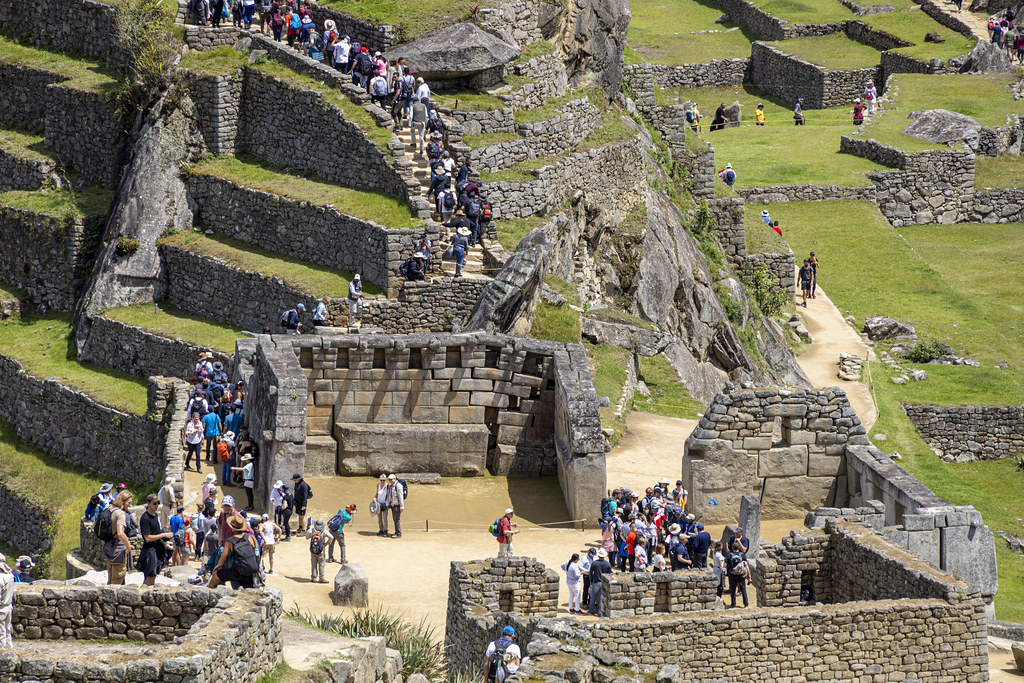
The Sacred Rock is a huge monolith carved by the Incas located in the north of the Inca citadel, it has a height of 3 meters with a base of 7 meters, made with granite stone and its fine carving at the base, would indicate that the Incas left offerings and sacrifices. A rock that served as an altar, a central and fundamental element for the cult of the mountain.
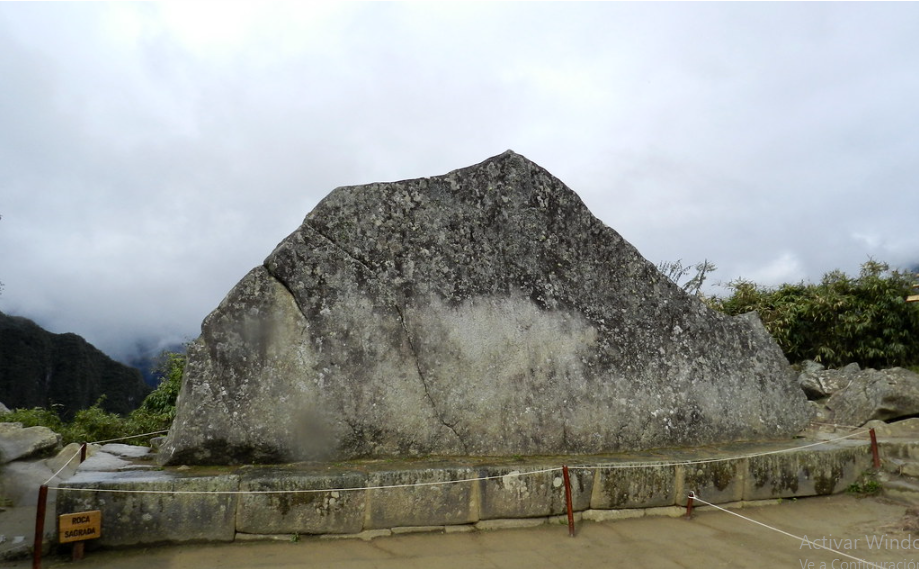
The Twelve Vanos or Enclosure of the 12 bays is located on the eastern side of the citadel, it is a set of lithic pieces that form a niche and part of a wall.
The eastern Qollqas were located in a staggered manner on the slopes of the hills, they are buildings used as warehouses to fulfill the function of warehouses and granaries, these buildings have a ventilation system as an optimal drainage system for food preservation.
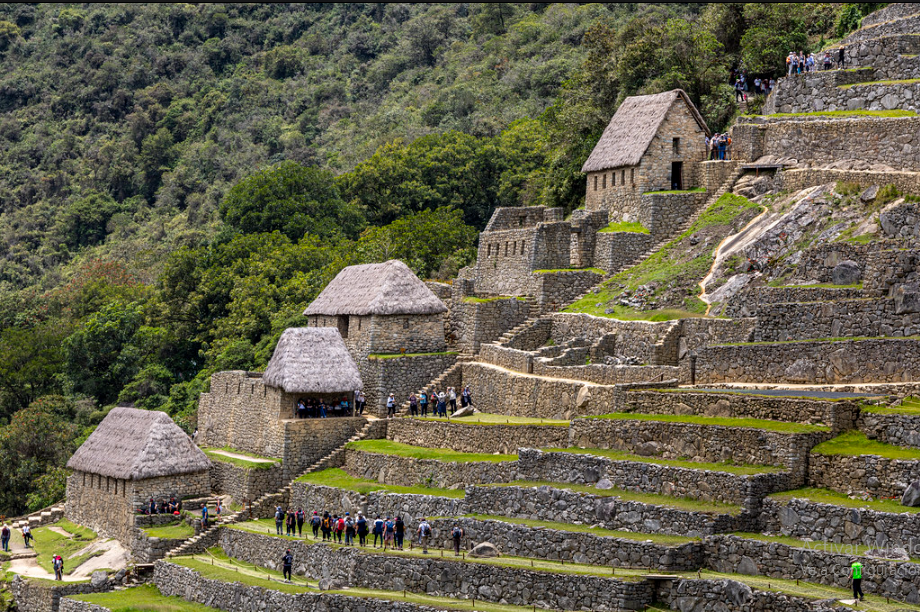
The Intihuatana Pyramid is a rock carved with flat features polished to great precision, a piece in the shape of a polygon where its faces project shadows in relation to the movement of the sun and allowed the Incas to measure time and season changes, it is a lithic piece dedicated to sunrise and means “Where the sun is moored”, a place for astronomical observation carved on 3 levels with 4 faces that direct the 4 cardinal points. It is believed that this Inca construction fills the tourists who come to its hands with energy. Access to the Intihuatana is through two long stairs.
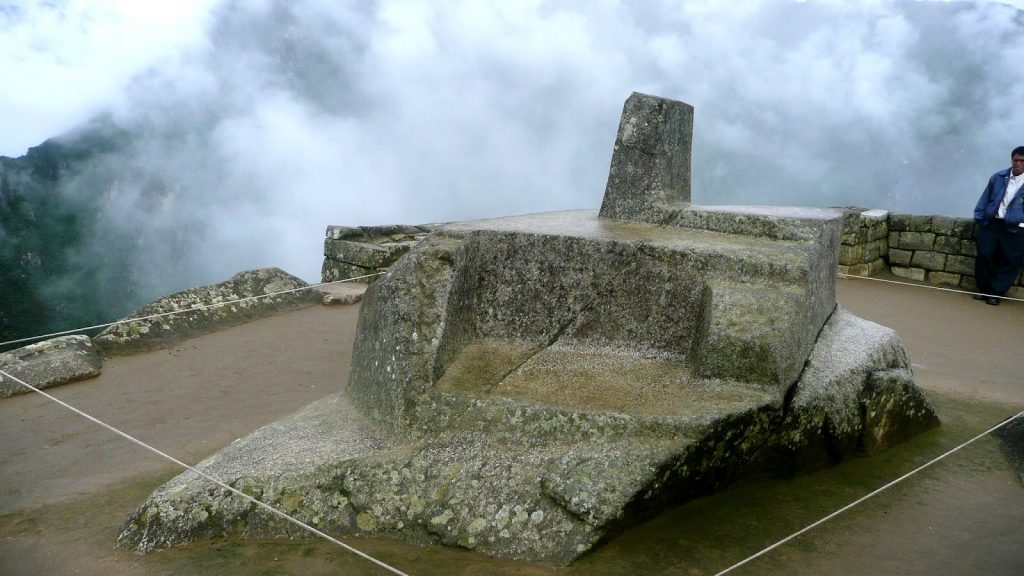
The Temple of the Condor is a stone building carved in the shape of wings and the head of a condor, separated into 3 stone blocks that together form the figure of the Andean condor, a bird sacred to the Incas that made up the sacred trilogy of the Hanan Pacha, Kay Pacha and the Uku Pacha.
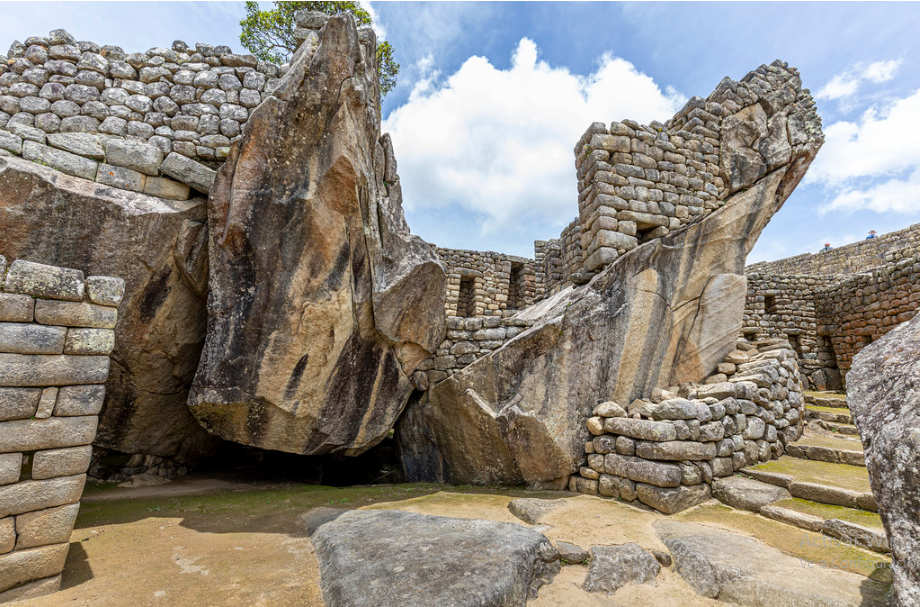
Circuit 2 begins at the bifurcation of the pedestrian access path to the Llaqta of Machupicchu, where there are 2 alternatives, one descending to access through the qollqas, another that ascends to enter through the upper zone. The travel time of this circuit is approximately 2 and a half hours from the entrance to the exit, where it guarantees a fantastic experience of the entire Inca citadel.